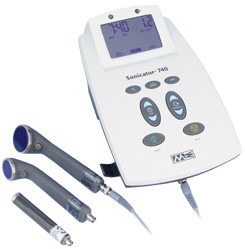 31st Aug 2015
31st Aug 2015
Physical Therapy for Scar Tissue
Scar tissue develops as the result of burns, deep lacerations or any injury that penetrates or disrupts the skin’s integrity. Skin has an amazing capacity to heal, so when injured a scab is formed following the injury. After several days the scab naturally sloughs off and the body then creates collagen fibers to strengthen to site of the injury.

Scars can result from a variety of injuries and can have some characteristics that can cause long-term effects. It is possible to use physical therapy treatments to treat scar tissue before a patient experiences dysfunction.
Scars have some common characteristics. They can become hard, non-pliable, with bands of fibers on or just below the surface of the skin, with a feeling of the skin tightening or becoming very dry. Now, the body’s formation of scar tissue is an awesome demonstration of self-preservation, however the fibrous mass of tissue can create problems. Scars are made up primarily of collagen and lack adequate circulation. As a result of the stress created by a scar, the surrounding tissue may experience nerve impingement, pain, numbness, limited range of motion, muscle atrophy, and tissue hypoxia. Addressing scar tissue early in its development can minimize these secondary tissue problems.
Physical Therapy Modalities for Scar Tissue Treatment
- Myofascial Release: Myofascial Release is a hands-on technique that provides sustained pressure into myofascial restrictions (tightness, scar tissue, injured areas) to eliminate pain and restore motion.
- Deep Transverse Friction: The purpose of deep friction massage is to maintain the mobility within the soft tissue structures of ligament, tendon, and muscle and prevent adherent scars from forming. The massage is deep and must be applied transversely to the specific tissue involved which enhances circulation and return of fluids.
- Paraffin Therapy: Warm paraffin wax treatments are commonly used to help improve pliability of scar tissue. Heat can reduce pain and improve elasticity of collagen fibers making scar tissue easier to mobilize. Paraffin combines the element of heat and skin lubrication, which are both useful for mobilization.
- Hot packs: The use of a heat pack on the scarred area can help increase the overall blood flow. This increased blood flow will help to remove the waste products and improving the availability of fresh blood. Fresh blood brings with it fresh nutrients, improving the quality of rehabilitation and decreasing scar tissue formation.
- Therapeutic Ultrasound: Dense burns are best heated by ultrasound. The ultrasound waves that pass through the skin cause a vibration of the local soft tissues. This vibration causes a deep heating locally. The intensity or power density of the ultrasound can be adjusted depending on the desired effect. A greater power density (measured in watt/cm2)is often used in cases where scar tissue breakdown is the goal.
Treating scar tissue is one of the most rewarding aspects of physical therapy. Often when there has been trauma to the skin, the patient too has been traumatized. Improving the appearance and functionality of the scarred area helps heal our patient’s body and mind.






